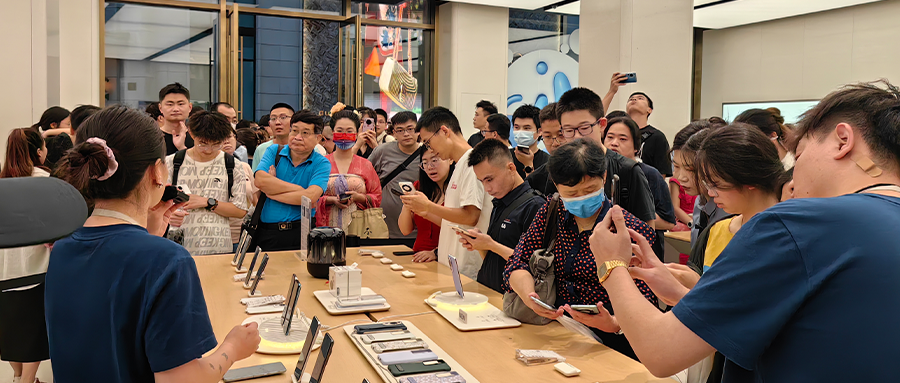
CCTV explained for the first time six core issues regarding Huawei Mate 60 and Kirin chips.
Source | Zhidixi ID | zhidxcom
Zhidongzhi reported on September 6 that just last night, China Central Radio and Television Station's "News 1+1" program focused on interpreting a series of thermal images released by Huawei Mate 60 Pro mobile phone and the Kirin chip used in it.
"News 1+1" is an in-depth interpretation column of CCTV's hot news hosted by Bai Yansong. This is also the first time CCTV has provided a professional and authoritative interpretation of Huawei's hot events.

▲Source: CCTV News
Previously, various parties in the industry have made a lot of private analysis on Huawei's new phone releases and related chip information. CCTV reporters interviewed Lu Tingjie, a professor at Beijing University of Posts and Telecommunications and executive vice chairman of the China Information Economics Society, as well as the vice chairman of TechInsights , an overseas semiconductor industry observation organization. Hutcheson and other relevant experts and industry insiders tried to understand the deeper meaning behind the release of Huawei Mate 60 Pro.
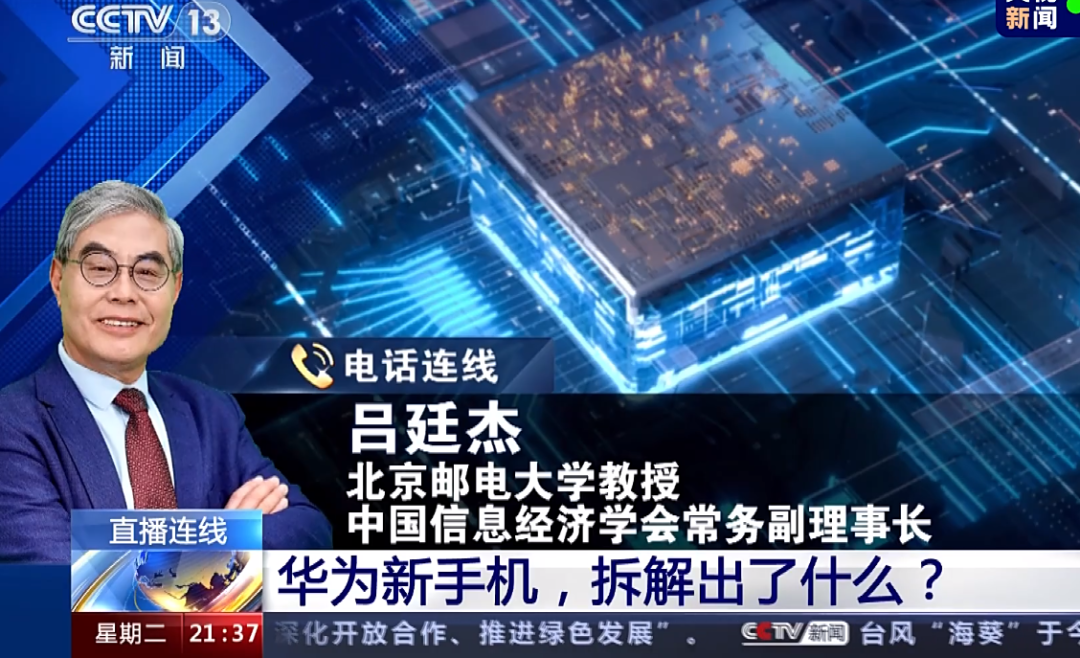
▲Source: CCTV News
The program conducted in-depth discussions on key issues such as Kirin chip technology and the potential breakthroughs behind it, the impact of the return of Huawei mobile phones, and possible follow-up actions by the United States and other Western countries . At the same time, it also focused on analyzing the satellite direct call technology released by Huawei for the first time. It contains many technological innovations and far surpasses Musk's Starlink satellite communications in terms of experience and technology behind it.
The following are some of the key issues mentioned in the CCTV program:
1. Does the release of new mobile phones mean that Huawei’s chip stuck problem has been solved and it has returned to the category of 5G mobile phones?
2. How far is the gap between Huawei Kirin 9000S and the world’s most advanced chips?
3. Is there any new breakthrough in stuck neck technology in China’s advanced chip manufacturing field?
4. Does the order volume of tens of millions mean that the chip mass production capability is strong?
5. Why do overseas media and institutions pay so much attention to Huawei’s new phones and the chips in them? What is their purpose?
6. What other actions may the United States take to restrict China’s chip industry? What is the overall strategy?
Recommend a meeting. On September 14-15, the 2023 Global AI Chip Summit will be held at the Renaissance Shenzhen Bay Hotel. Professor Wei Shaojun of Tsinghua University leads nearly 50 speakers, including NVIDIA, Qualcomm, Intel and AMD. Nearly 30 Chinese AI chip and computing power companies will compete on the stage, and 3 Chiplet start-up teams will appear. The opening ceremony, AI chip architecture innovation session, AI large computing power chip session and high energy-efficiency AI chip session will be held at the main venue. The Computing Power and Network Summit Forum of the Intelligent Computing Center will be held at the branch venue. Scan the QR code to register~

01.
Huawei's first sales are hot, satellite calls attract much attention,
experts decrypt the key breakthroughs behind it
In recent days, the Huawei Mate 60 Pro model has been put on sale through all channels. Third-party e-commerce channels such as JD.com also made an exception and directly advanced the final payment time by 7 days, and started full-price sales on the evening of September 3.
Judging from information officially released by Huawei, Huawei's offline stores in many places across the country are "hugely crowded", and the long queues to buy are no less grand than when the Huawei Mate40 series equipped with Kirin 9000 went on sale.
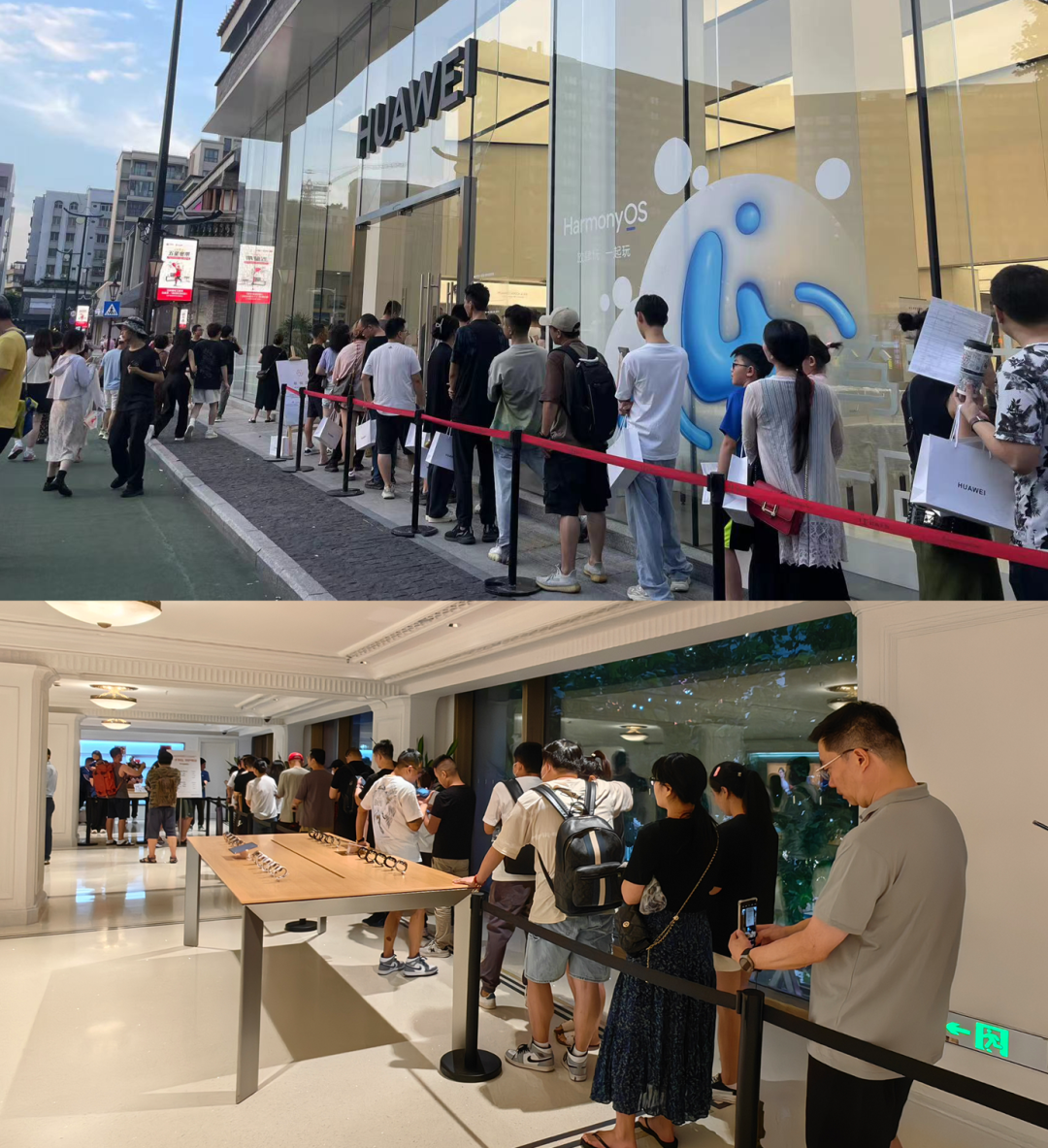
▲Consumers at some Huawei stores lined up to buy the Huawei Mate 60 series
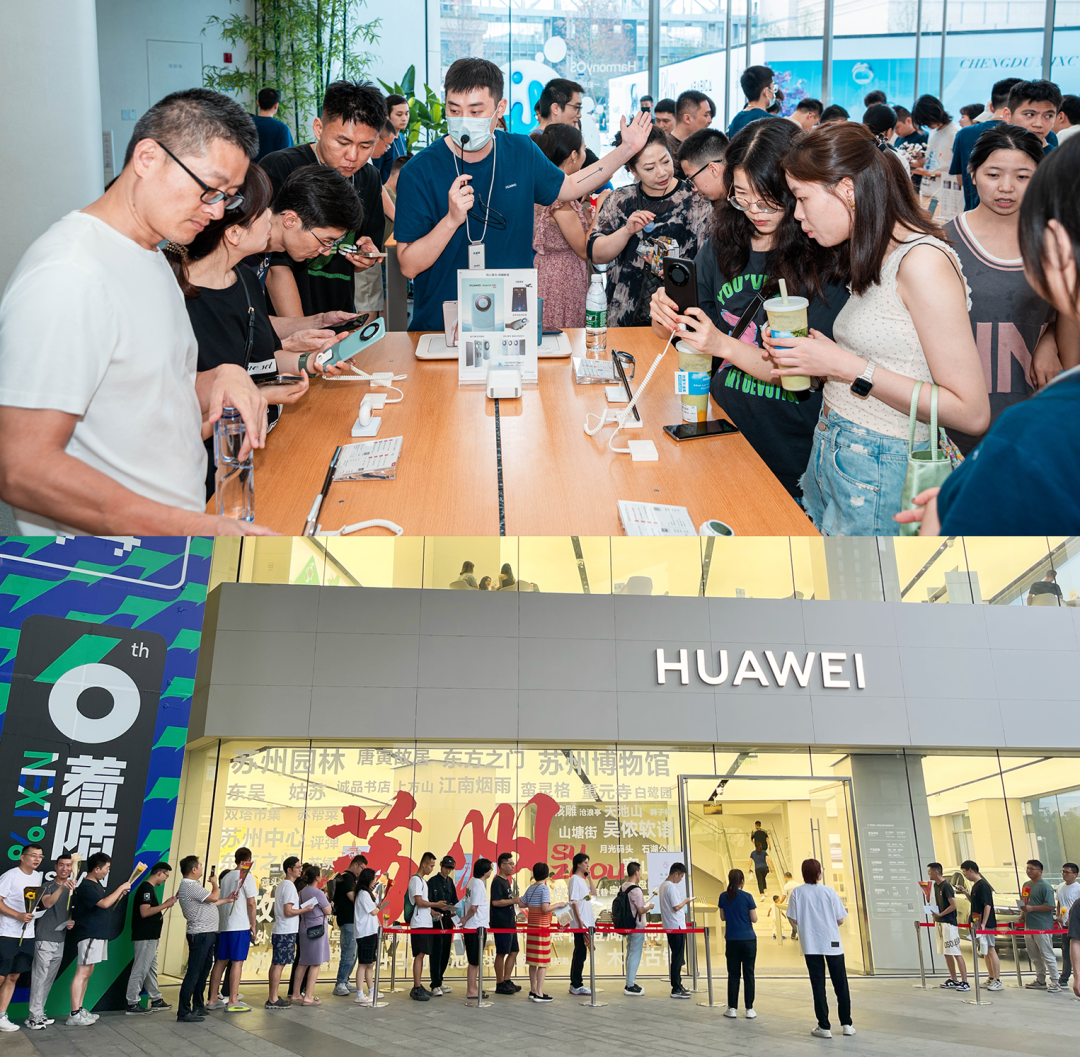
▲Consumers at some Huawei stores lined up to buy the Huawei Mate 60 series
Someone in the mobile phone chip industry told Zhidongzhi that based on current sales, Huawei will sell nearly 20 million mobile phones in the next three months to achieve its annual shipment target of 40 million units.
In CCTV news programs, we can also see Huawei’s booming sales.
At the only Huawei-operated store in Beijing, store managers had to allocate manpower from Shenzhen to deal with the surge in customers.
A customer interviewed by CCTV News mentioned that he had been waiting for two or three years. As soon as Huawei's new phone came online, he came over and queued up as soon as possible. Satellite calls and Internet speed were of particular concern to him.
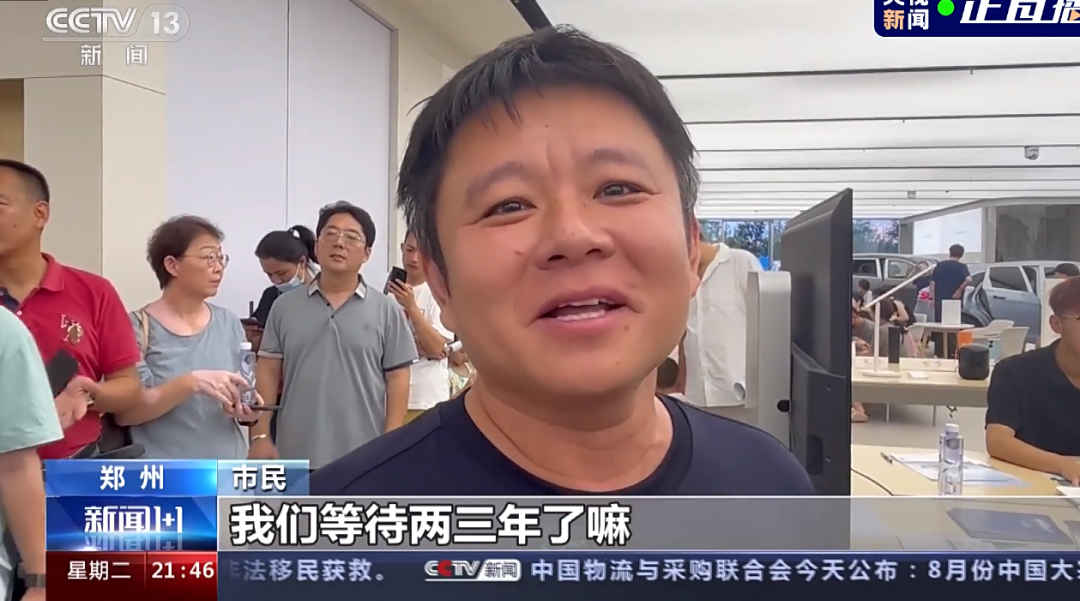
▲Source: CCTV News
A clerk at a Huawei store in Zhengzhou who has worked for seven or eight years told CCTV News that sales of Huawei mobile phones have reached a flat period after 2019. After the new mobile phones went on sale, the number of consumers entering the store increased by 80% from Monday to Friday.
The clerk specifically mentioned that there was a customer from Inner Mongolia who often went to places with no signal because he needed to graze cattle, so he was very interested in the Mate 60 Pro's satellite call.
Professor Lu also focused on Huawei's satellite calling technology during the interview. In his opinion, Huawei's satellite calling function is a very big improvement, and it is also something that makes professionals like them shine.
Professor Lu is an independent director of China Satcom. He mentioned that Huawei is connected to Tiantong-1, a high-orbit digital broadcast communication satellite launched in 2016, about 36,000 kilometers above the ground. Previously, direct satellite communications were usually able to achieve "short messages", but now Huawei can achieve direct satellite calls. Therefore, Huawei must have made important breakthroughs in antenna technology, power consumption control technology, etc.
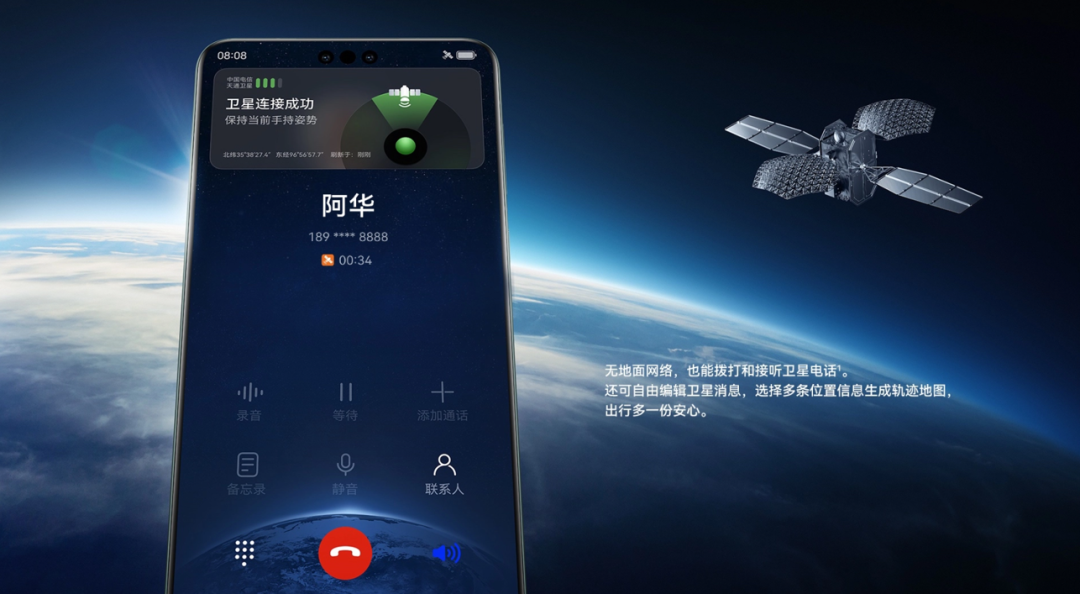
Musk's Starlink plan currently uses low-orbit satellites about 1,000 kilometers above the ground. At the same time, the ground receiving end also needs to be equipped with expensive additional equipment. It is far from being able to achieve Huawei's convenient direct-connect communication experience, and the cost is also higher. .
02.
What kind of black technology is hidden in the Kirin 9000S that surprised everyone ?
CCTV commentator Bai Yansong directly pointed out the core question in the program: Does the release of the new mobile phone mean that the problem of Huawei's chip stuck has been solved, and it has returned to the category of 5G mobile phones?
In order to answer this question, CCTV News starts with the dismantling of Huawei Mate 60 Pro by all parties. In addition to quoting the disassembly videos of some domestic technology bloggers, CCTV also specifically named the disassembly report of Huawei Mate 60 Pro released by TechInsight, an overseas semiconductor industry observation organization.
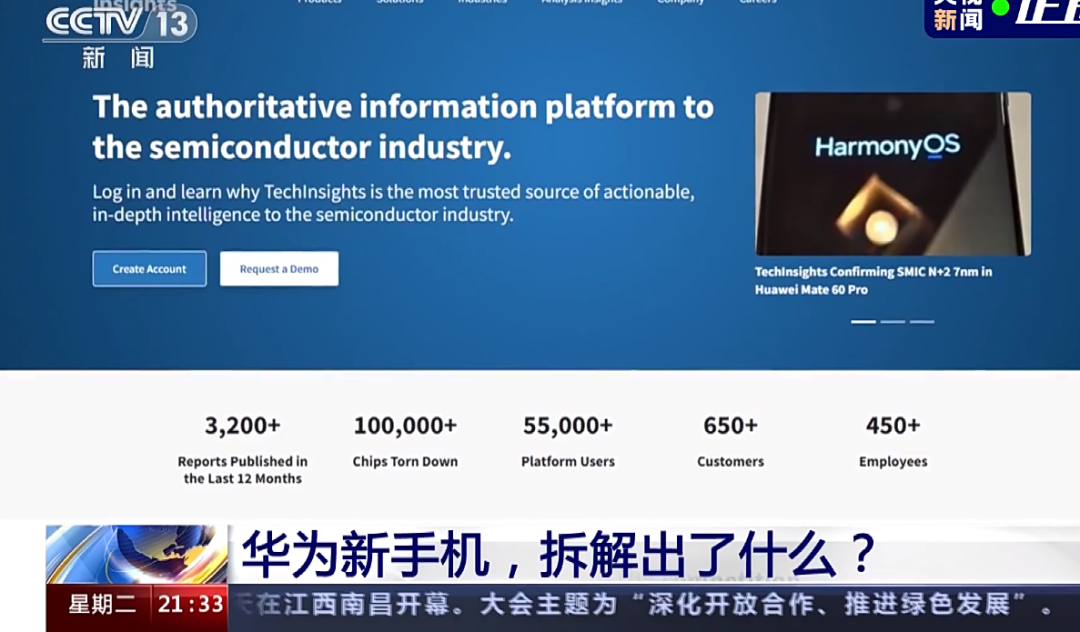
▲Source: CCTV News
TechInsights Vice Chairman Hut Chesheng was interviewed by a CCTV reporter. He said that the Huawei Mate 60 Pro they disassembled was purchased from China. In his opinion, the level of Kirin 9000S is amazing and it is what they expected. unmatched, and it's certainly world-class.
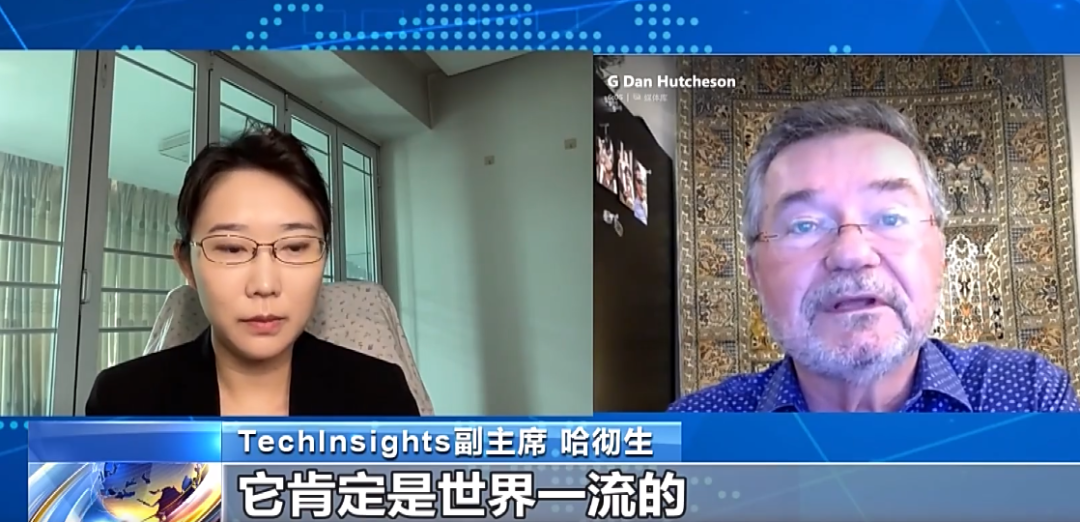
▲Source: CCTV News
Hutcheson further explained that this achievement means that China has very strong capabilities and is continuing to conduct technological research and development. Other countries in the world should not underestimate China.
CCTV News cited a TechInsights report that the Kirin 9000S chip used in Huawei Mate 60 Pro uses "advanced 7nm chip technology . " The report believes that this chip represents a milestone in China’s chip design and manufacturing.
CCTV reporter Wei Xuejiao asked Hutcheson whether he thought Huawei had solved the US "sanctions" by developing its own cutting-edge 5G technology. Hutcheson did not answer the question directly. He believed that Huawei was developing its own chips . Great achievements have indeed been made in this regard. Kirin 9000S is a very advanced chip.
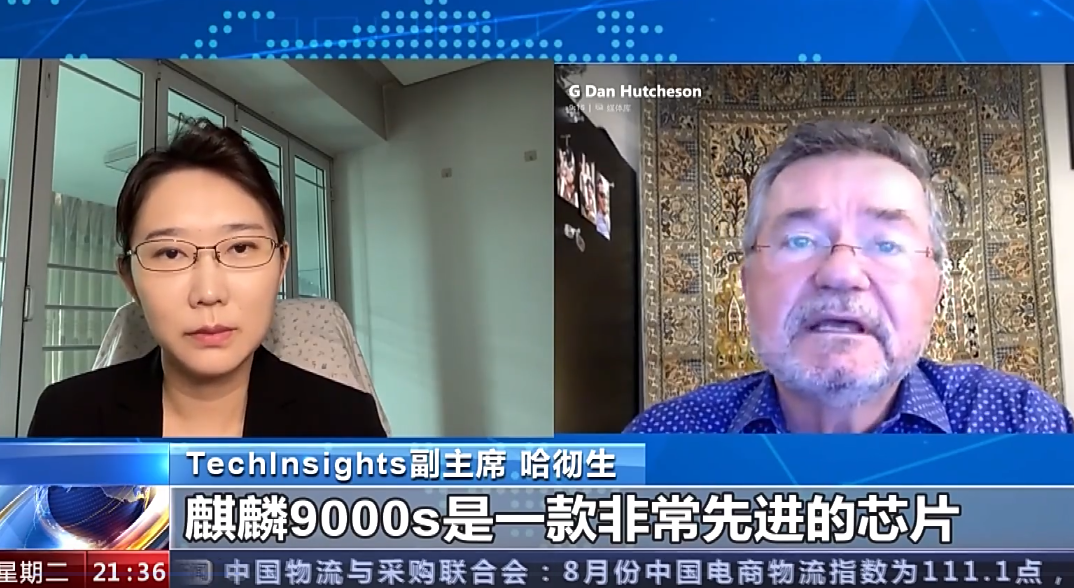
▲Source: CCTV News
He specifically mentioned that although Kirin 9000S is not as advanced as the world's top chips, the gap is within the range of 2-2.5 nodes.

▲Source: CCTV News
03.
The "China Speed" that chips are catching up with
achieves a "from 0 to 1" breakthrough
Immediately afterwards, CCTV News connected with Lu Tingjie, a professor at Beijing University of Posts and Telecommunications and executive vice chairman of the China Information Economics Society. In Professor Lu’s view, the 2-2.5 node gap mentioned by Hatcherson means that we are different from 5G with advanced processes. Chips are still three to five years away.

▲Source: CCTV News
However, it should be noted that Professor Lu believes that the three to five years are judged by Western countries based on the speed of their technological progress, but China's "China speed" is often exceeded.
Professor Lu believes that the emergence of Kirin 9000S is a "0 to 1" relationship. We have finally solved the problem of advanced 5G chips for 5G smartphones, but we must also admit that there is still a big gap.
It is worth mentioning that during the interview, Professor Lu also mentioned that Apple’s upcoming iPhone 15 series has already used “4nm” chips. They judged that Kirin 9000S should be able to reach or be close to 7nm, but from 7nm to 5nm and then to 4nm , still requires a long and difficult R&D process.
Professor Lu concluded that no matter what, this is indeed a very important breakthrough. We have localized the most critical 5G chip part of smartphones.
04.
Breaking through the US "stuck"
Huawei's key technological progress deserves attention
Next, Bai Yansong further asked, has the "stuck neck" problem been solved?
Professor Lu said that judging from the information they have received so far, more than 10,000 parts used in Huawei Mate 60 Pro have basically been domestically produced. If they are all domestically produced, then in 5G smart phones In the field of mobile phones, neck jamming does not have the desired effect.
However, he added that making chips with advanced processes involves many links. Design software such as EDA has been noticed by Huawei for a long time, and it has developed independently designed related software very early. However, in addition to design software, it also needs to solve coating, optical Resistors, especially photolithography machines, have obvious bottlenecks. If it is really solved this time, it means we have made progress in these aspects.
Professor Lu specifically mentioned that everyone’s focus is on the lithography body, but some have overlooked that Huawei must have made very important progress in advanced process control, which are worthy of attention. Because the yield rate (yield rate) of advanced process chip tape-out directly determines its commercial value. If the cost is too high, the commercial value will be greatly reduced.
05.
Western industry organizations are being dismantled
and may still be looking for new "restrictive" strategies
Regarding the dismantling of Huawei Mate 60 Pro by TechInsight, a foreign semiconductor industry observation organization, Professor Lu believes that these organizations need to understand the degree of localization of its components on the one hand, and the advanced level of its technology on the other . It is a technology that is restricted by the West, especially the United States. Is there any "red line"?
At the same time, they may also be looking for places where they can further increase barriers to restrict our development of advanced technologies, including advanced processes. In fact, they are making an overall judgment on what level the Huawei Mate 60 Pro has achieved as a whole, and whether there is anything that can further "control" you.
Hatcherson used the word "unexpected" in the interview. Professor Lu also added that in fact, not only him, but also many people in the domestic industry did not expect this.
Western countries have developed early in advanced chip technology, and Western countries have long believed that at their speed, it will take a long time for China to catch up.
China has previously achieved localization of 14nm chips, but there are still many problems that need to be solved from 14nm to 7nm or even more advanced processes.
Therefore, from the perspective of the West, China suddenly conquered their "estimated 7nm chip" in such a short period of time. There must be some very unique technological advancements or solutions. This is what surprised them.
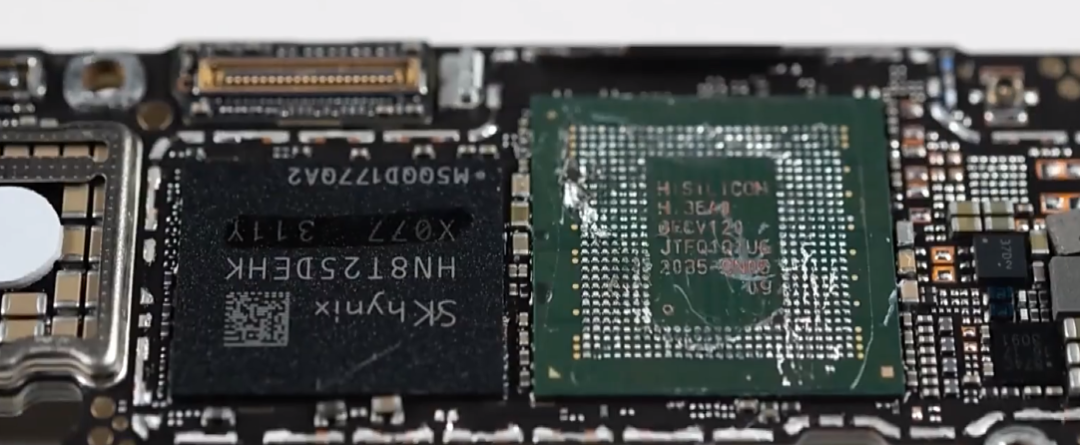
▲Kirin 9000S (right), source: TechInsight
Professor Lu mentioned that as a consumer product, the brand of mobile phones must ensure a certain degree of "popularity." If Huawei's 5G mobile phones are absent for a long time and the popularity drops significantly or even disappears, it will have a significant impact on the industry chain of mobile phone products, so Huawei's pace will also be Need to keep up, which may be why Huawei is rushing to launch the Mate 60 Pro phone.
Recently, many reports have mentioned that the additional orders for Huawei's Mate 60 series have reached 15-17 million units. Does this reflect some information on chip mass production capabilities?
In this regard, Professor Lu believes that this aspect shows that Huawei should have made some breakthroughs in ensuring chip yield, otherwise it would be difficult to meet such a large production scale. In addition, the popularity of this generation of products will also promote the research and development and technological progress of the next generation of products.
Professor Lu specifically mentioned that Huawei is a full industry chain company. Huawei has Hongmeng operating system, which can also be connected to Huawei's own Pangu model. Huawei Mate 60 Pro is also a "phenomenal product" worthy of attention.
06.
Three years of suppression of tenacious survival,
China’s technological rise accelerates
From May 2019 to September 2020, the U.S. government unscrupulously imposed multiple rounds of unfair sanctions on Huawei. The supply of Huawei's 5G mobile phone chips was completely cut off. Since then, Huawei's mobile phone sales have dropped significantly, and its global market share has dropped from 18% in 2019. falling to 2% in 2022.
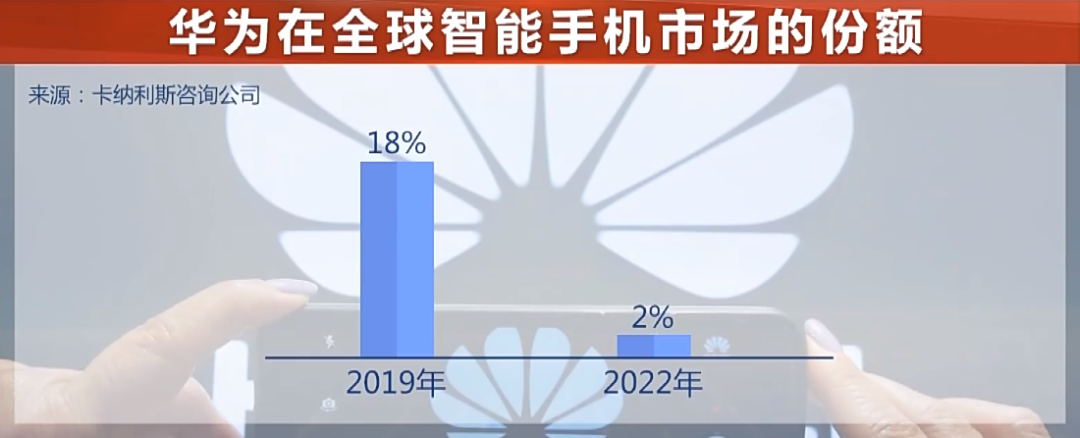
Source: CCTV News
The restrictions initiated by the United States against my country in the semiconductor field in the past year have continued to escalate. In August 2022, the U.S. government signed the "Chip and Science Act of 2022". In January this year, Japan and the Netherlands also reached an agreement with the United States to impose restrictions on China. Semiconductor equipment export restrictions.
The launch of Huawei's flagship mobile phone has not only attracted enthusiastic attention in China, but also received widespread attention in the international market. CCTV News commented that the launch of a mobile phone has caused concerns in Washington that U.S. sanctions have failed to prevent China from making key technological progress.
The Washington Post reported that this seems to fulfill the warning of US chip manufacturers that sanctions will not deter China, but will stimulate China to redouble its efforts to create alternatives to US technology.
Taiwan Province of China current affairs commentator Jie Wenji commented that it has only been more than three years since the United States suppressed Huawei and the supply of high-end chips for China's IT industry. In terms of design and manufacturing, mainland China has relied on its own strength and used domestically produced chips. The power was created. In his opinion, this exceeded most people's expectations.
According to Huawei's annual report, as of the end of 2022, Huawei has more than 114,000 R&D personnel, accounting for 55.4% of the total number of employees. Huawei's R&D expenses in 2022 will be approximately 161.5 billion yuan, accounting for 25.1% of annual revenue. The cumulative investment in the past ten years has been R&D expenses exceeded 977.3 billion yuan.
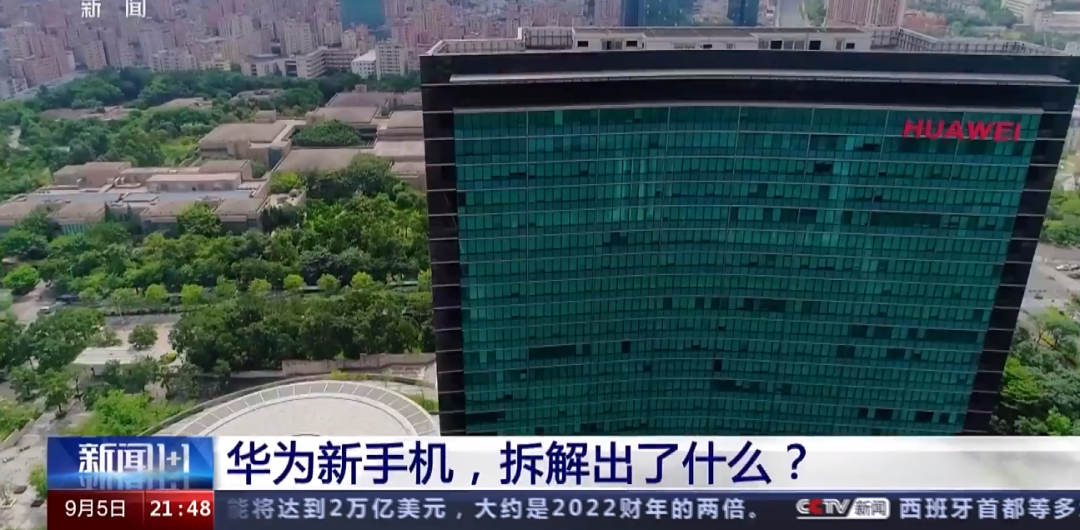
▲Source: CCTV News
Professor Lu mentioned that in fact, the United States has been exporting high-end 5G chips to China, but it does not allow Huawei to buy them. The reason is that China is the world's largest chip market. In the past three years, China's chip imports have exceeded 4,000 yuan each year . billion US dollars, China's oil imports in 2022 will be 365.5 billion US dollars. It is impossible for the United States to lose all of such a large market.
Professor Lu mentioned that the current US strategy is to prevent China from obtaining high-performance chips used in the current wave of artificial intelligence, while at the same time restricting key technology companies like Huawei. Because Huawei has full industry ecological capabilities, strong R&D capabilities, and a huge communications terminal product business.
07.
Conclusion: "Huawei reserves talents, not dollars"
With sales of Huawei's new phones booming, Huawei's technological innovations and the breakthrough of China's chip industry are worthy of attention. Perhaps as Huawei founder Ren Zhengfei said, Huawei reserves talents, not dollars.
At present, domestic Android smartphone manufacturers are "attacking the high-end" and "betting against Apple". However, judging from the actual sales results, Apple is still "the dominant player" in the high-end flagship phone market. Huawei's 5G flagship phone Returning may be the key to breaking this situation.
According to the information currently released in the industry, Huawei's "All in" Kirin chips have become a general direction in the future, and 5G Kirin chips will be used in mid-range phones to flagship phones, as well as tablet products.
A few days ago, US Secretary of Commerce Raimondo visited China and said that the biggest achievement of this trip to China was the establishment of a regular communication mechanism with China. "This is a big step forward." However, before coming to China, Raimondo also "made harsh words" on Huawei-related topics.
Overall, after being restricted for four years, Huawei has kept a low profile and tackled difficult problems. This time it can be said to be a "win in the first battle." In any case, the Huawei we are familiar with is back. Perhaps it is like an old friend who has traveled far and experienced a difficult time. , but in the end he stood in front of us again and said, "I'm back."